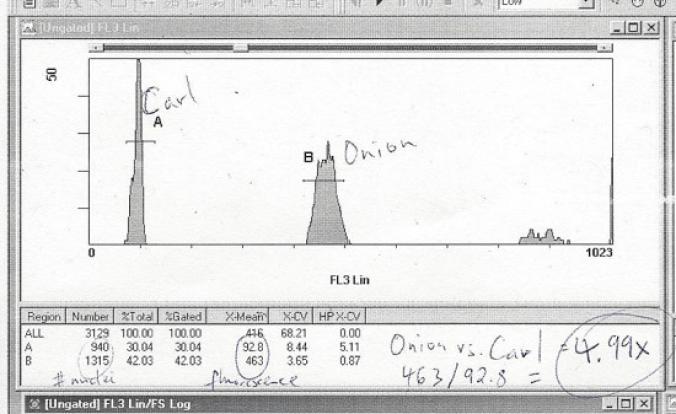
In this Sunday’s issue of the New York Times Magazine, I have a featureabout clashing visions of the genome. Is it overwhelmingly made up of “junk”–pieces of DNA that provide us with no useful function–or is it rife with functional pieces that we have yet to understand? Or is the reality of the genome a confusing mixture of the two?
To research this story, I shed some blood so that I could compare my genome to that of an onion. This print-out, annotated by T. Ryan Gregory, shows that an onion has five times more DNA in its genome than mine. I also spent time in the lab of John Rinn at Harvard, where scientists are discovering hints that our genome encodes exotic molecules that may be essential for our well-being. And I talked to a range of scientists about the challenges of understanding what any given piece of DNA is “for,” and what sort of assumptions one should bring to the challenge. Finally, I dug deep into the history of this question, which has roots reaching all the way back to Darwin. Check it out.

P.S. This is an incredibly rich topic, and I welcome readers to discuss it (especially the stuff I didn’t have room to get to in my feature) in the comment thread below. I’ll also post some interesting papers here, too.
The Genomic Challenge to Adaptationism, by Sahotra Sarkar. British Journal for the Philosophy of Science, 2014. [subscription required]
Junk or Functional DNA? Germain et al., Biology and Philosophy, 2014. pdf
An Evolutionary Classification of Genomic Function, by Dan Graur et al. Genome Biology and Evolution 2015.
Discovery and Annotation of Long Noncoding RNAs. Mattick and Rinn. Nature Structural & Molecular Biology 2015. [subscription required]
Originally published March 6, 2015. Copyright 2015 Carl Zimmer.